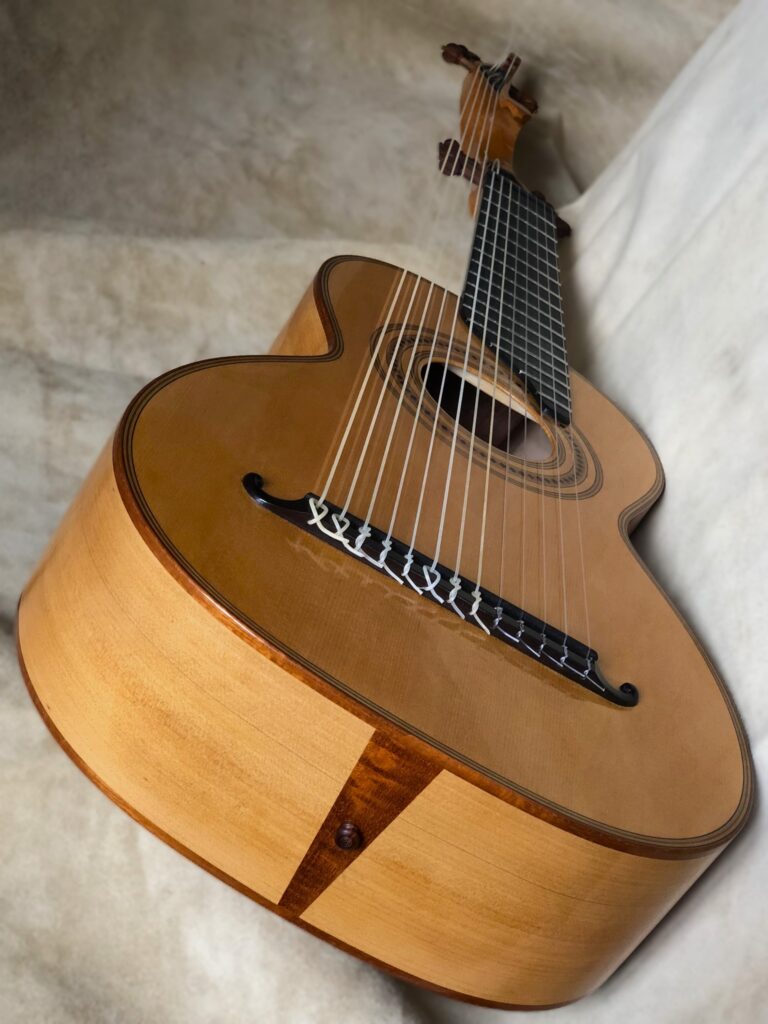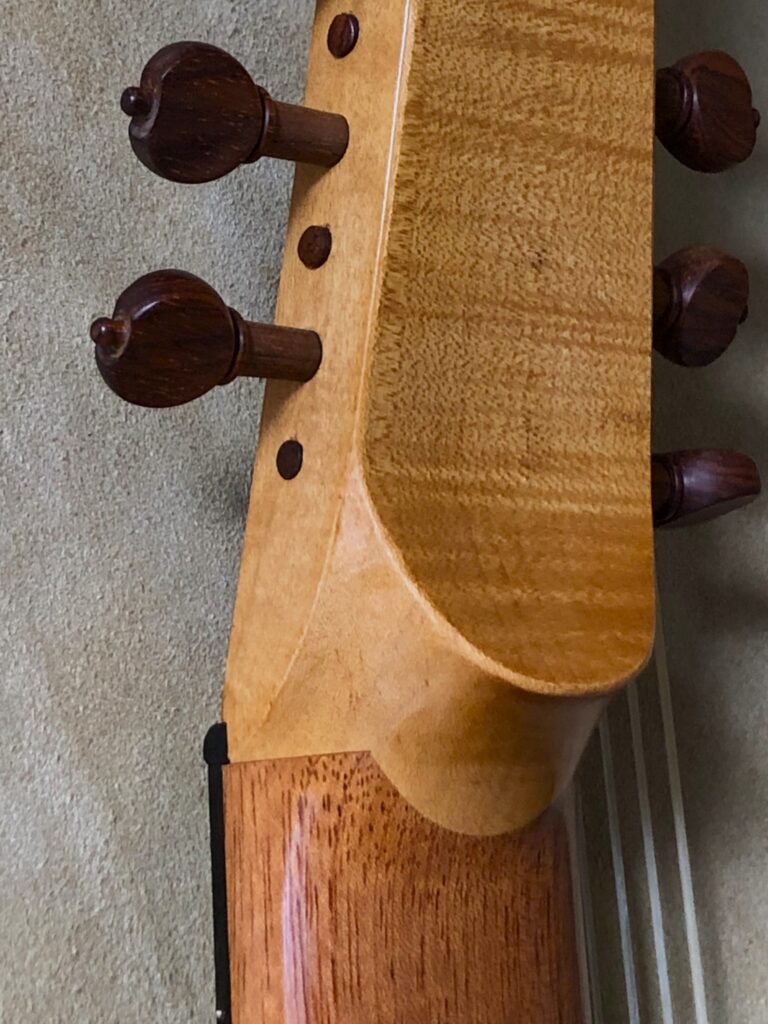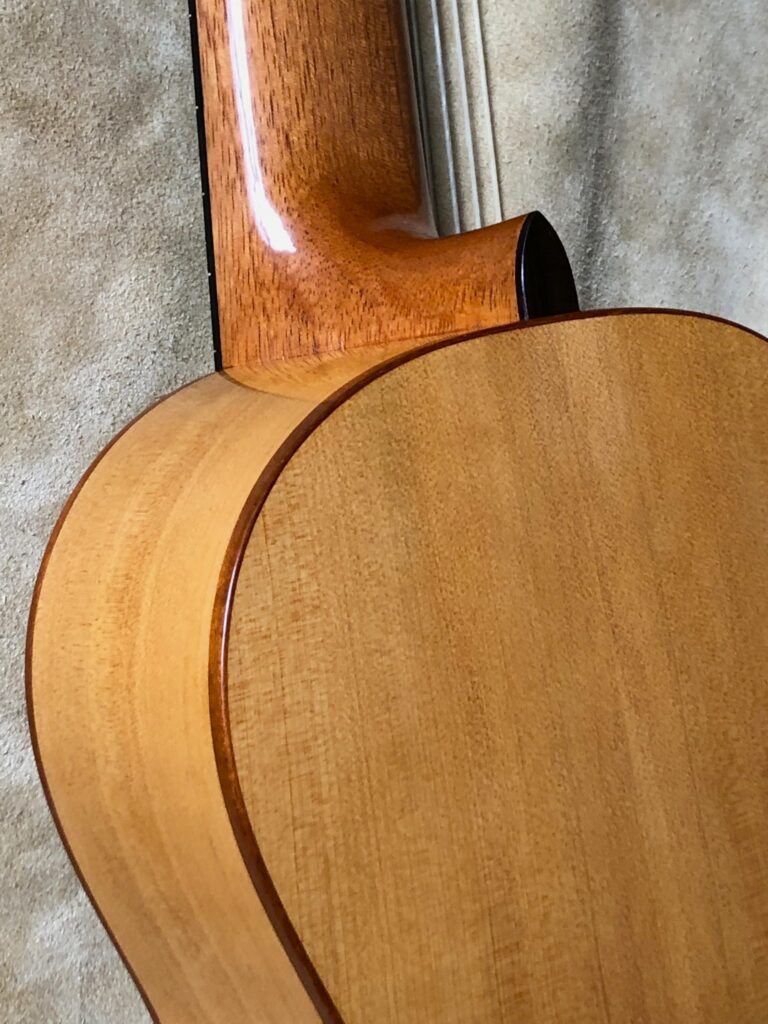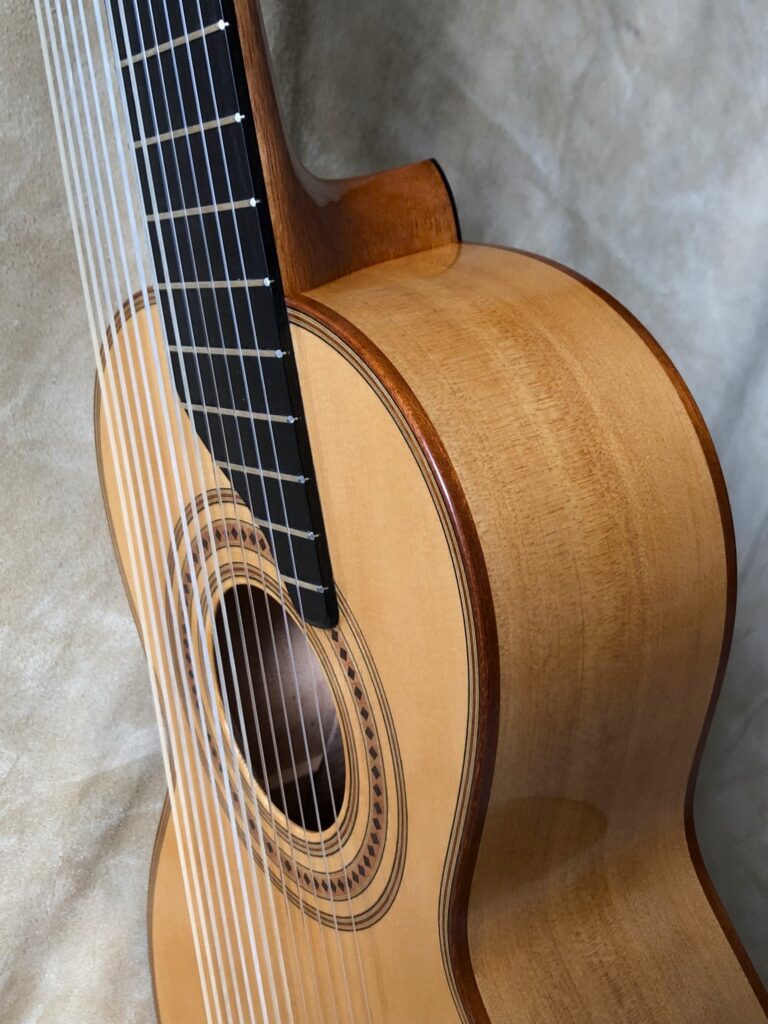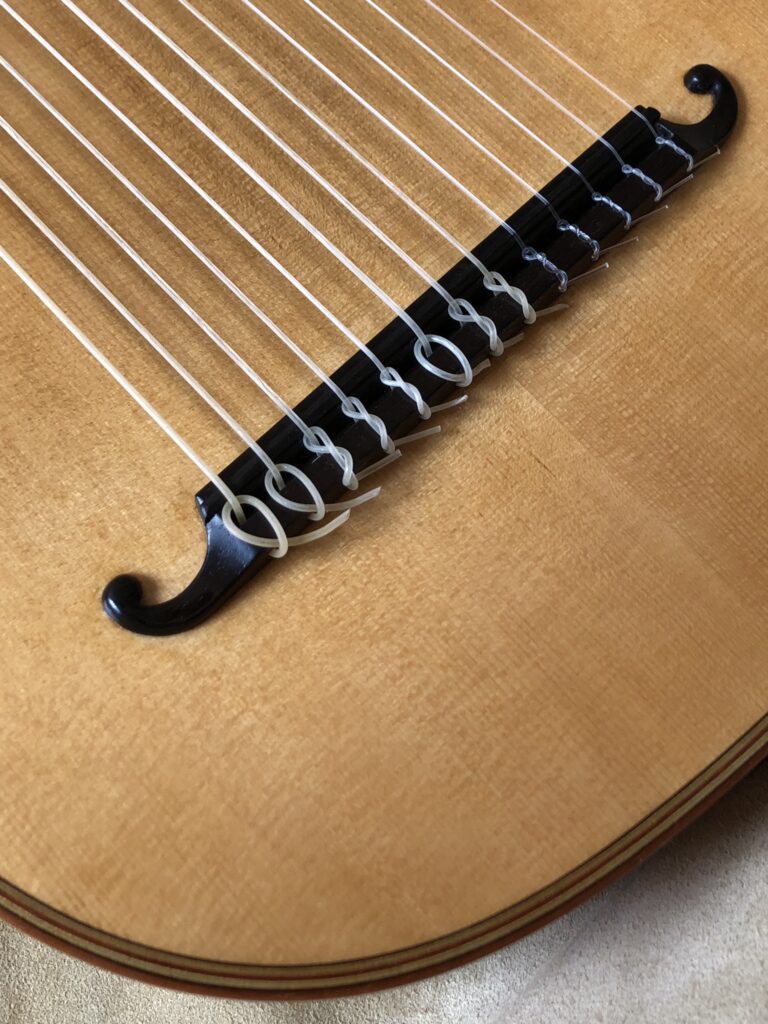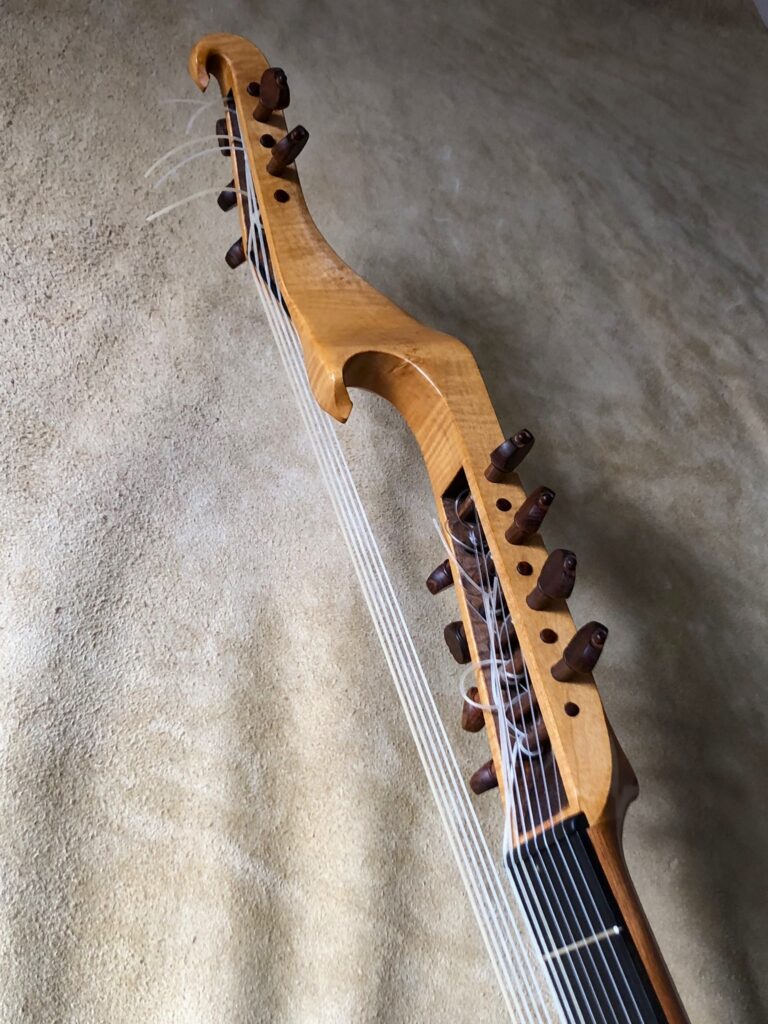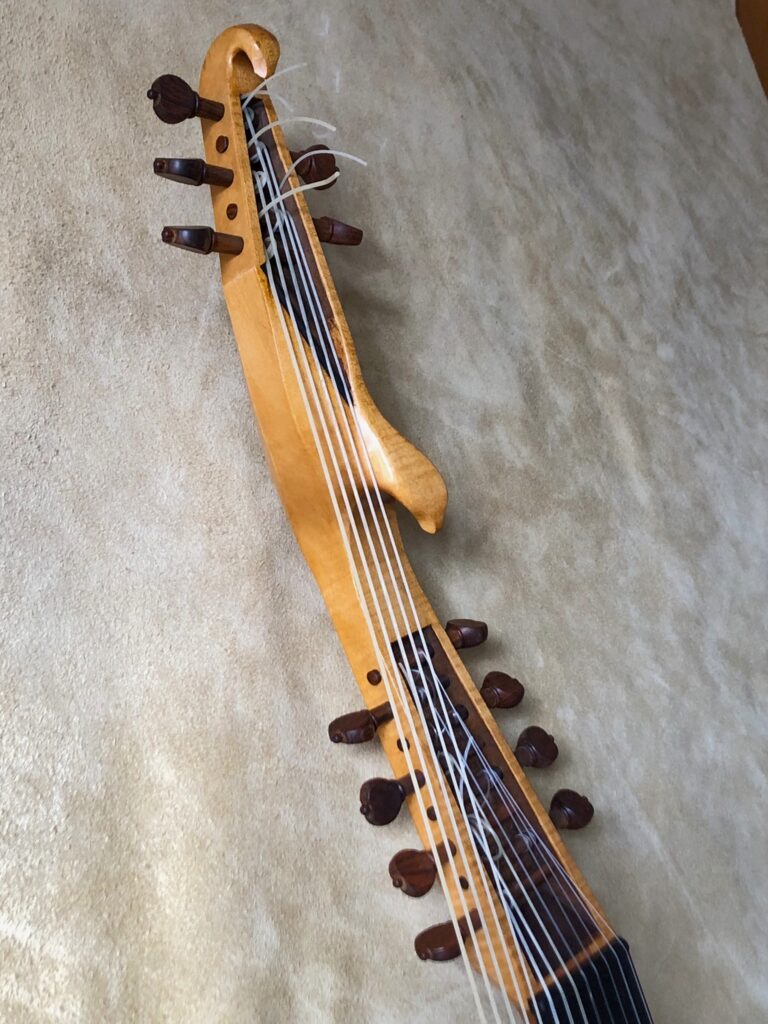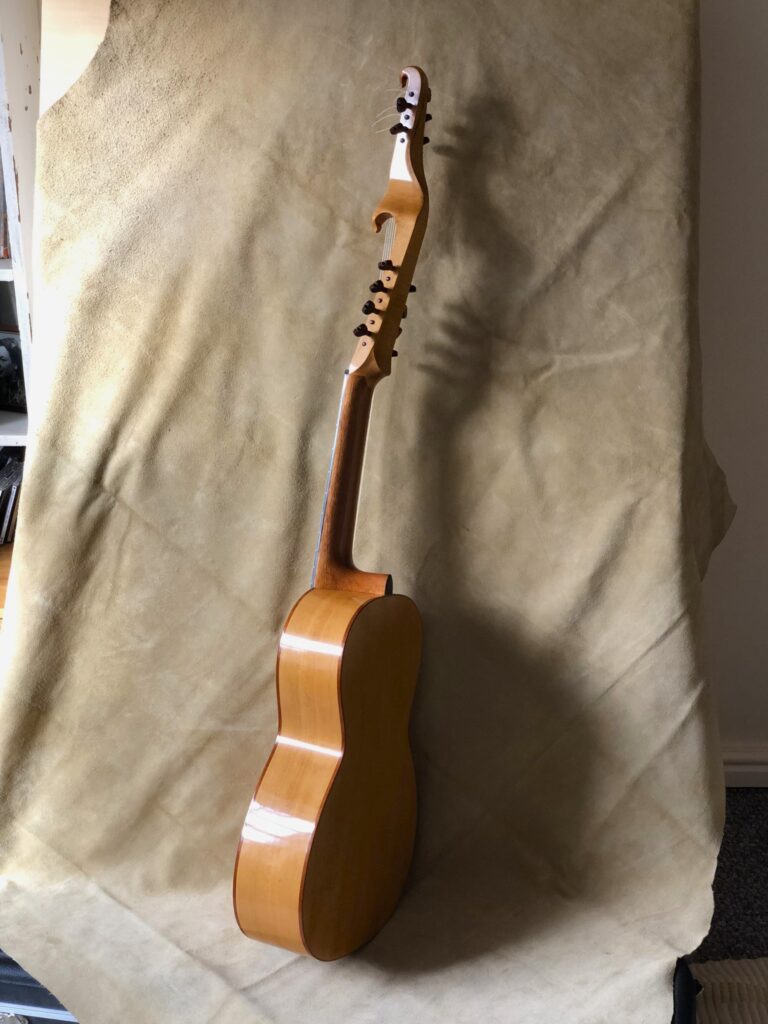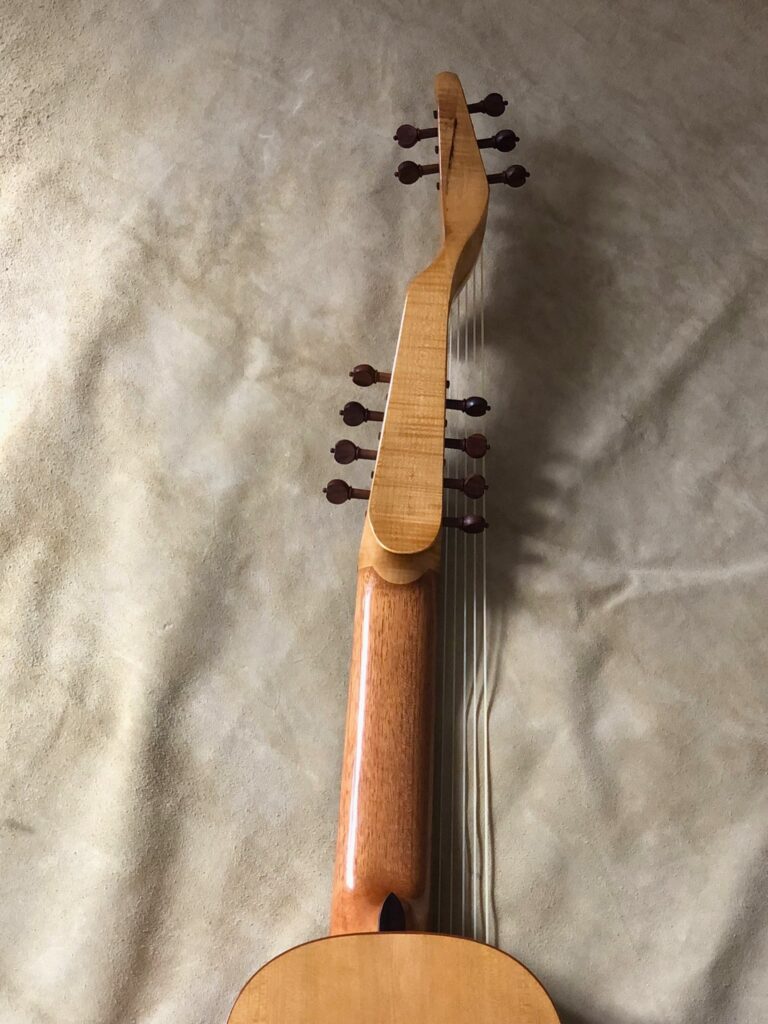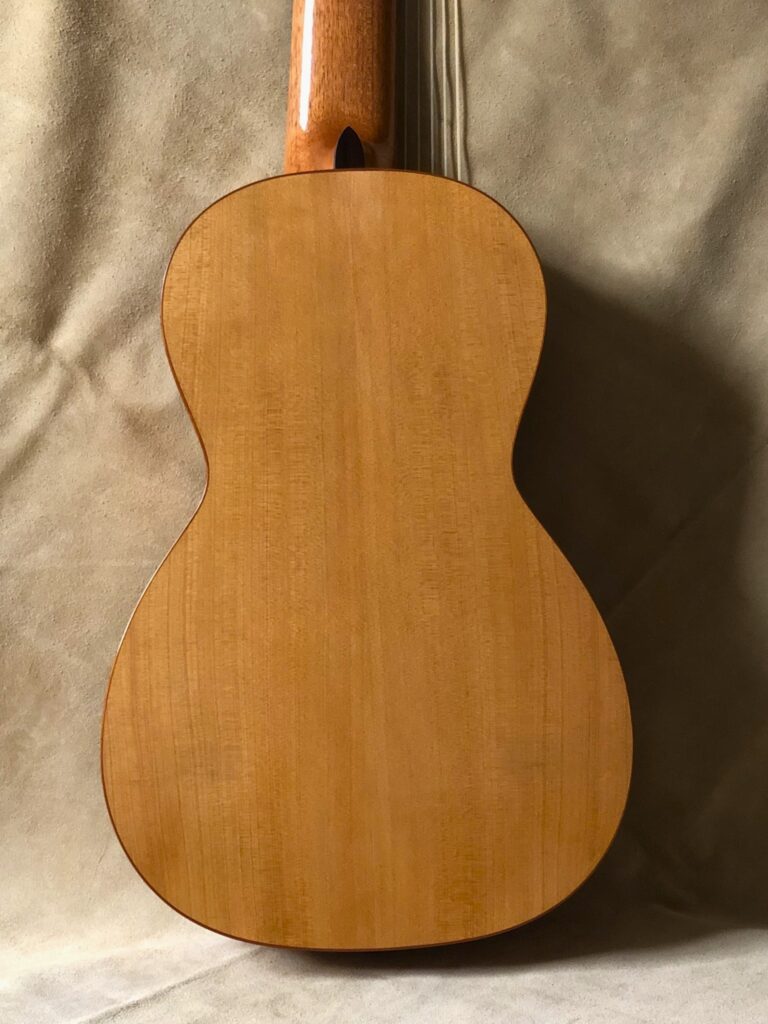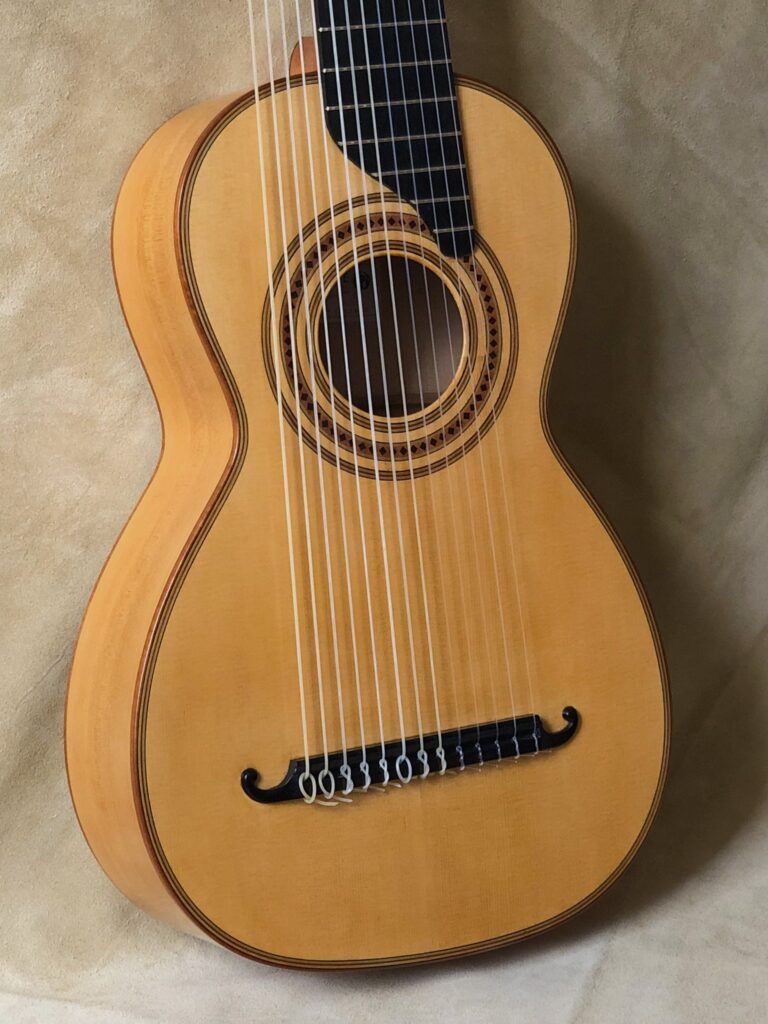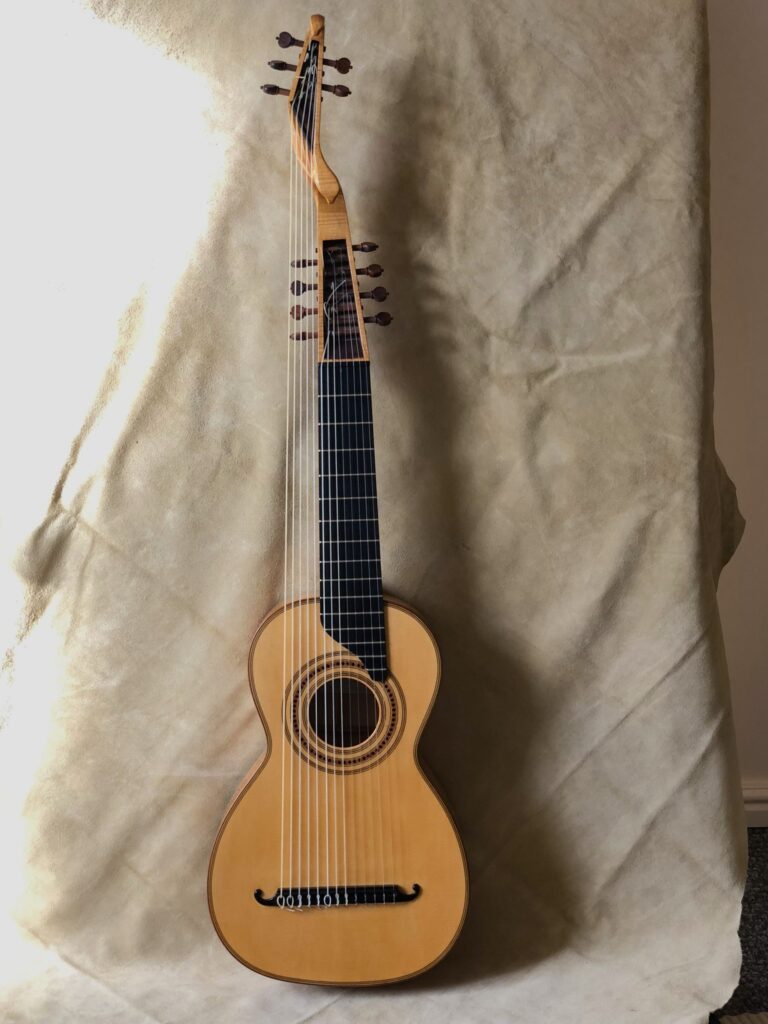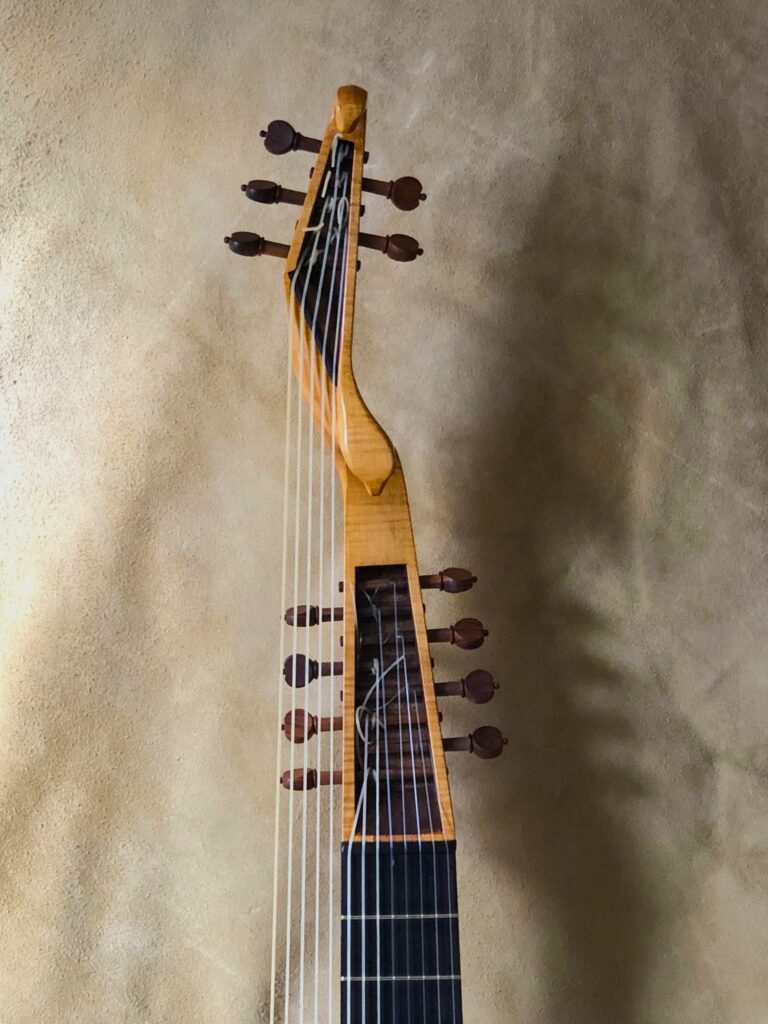
13 String Baroque Guitar-Lute
In the spring of 2023 Rob MacKillop contacted me with an idea for an instrument he wanted to have made. He had a concept for a hybrid instrument – a 13 course baroque guitar-lute for playing late baroque lute repertoire. The idea was to achieve a sound somewhere between the lute and guitar, with easy playability. As I hadn’t made anything quite like that before, I thought it was a very interesting project.
Rob had put together a clear list of his requirements: he wanted a small bodied 18th/19th century guitar style, and among other things, he explained the kind of sound he wanted, the number and length of strings, single courses, not double, and tuned in D minor like the late baroque lute. He also wanted a radiused fingerboard like the lute, particular string spacings at nut and saddle, a 10th fret neck/body joint position, a canted neck and tuning pegs. The instrument was to be of a light coloured timber with a honey coloured finish. Rob sent me photos of various baroque guitar-lutes old and new that he’d found for reference. In discussions it soon became apparent that we shared a similar aesthetic sense, which made the planning stage very smooth. We both wanted the guitar to look beautiful and elegant. To satisfy these requirements I suggested body shapes that I had available and timber possibilities that could work. We decided on using the Roudhloff brothers’ Melophonic guitar shape with an X-braced top, cypress back and sides, and a 10th fret neck joint position – the original Melophonic guitar is designed for a scale length of around 630mm with a 12th fret neck joint, so a 10th fret joint moves the bridge down the body towards a more lute-like position and thus elicits a quasi lute-like response from the front acoustically. I also moved the sound hole up the body a bit, since the fingerboard length is shorter than a classical guitar, to give the front more of a baroque guitar look.
The double peg box idea originates from the late baroque swan-necked lute, and it appears in various guises in the guitar-lute historical precedents, which I referenced. I found one that appealed to both of us – the peg box for the extended basses had an angled nut so that the string lengths increase as they get lower in pitch, helping to minimise the string gauges. I used this concept as the basis for my own head design. I made drawings, which Rob approved of, then went ahead with the making. I used a couple of pieces of rippled English sycamore for the head/pegbox, which had been given to me by a friend who had had to fell the tree in his garden. The sycamore was light and strong as well as pretty, and easier to carve than maple would have been.
So there are 13 strings. 8 of them are fretted, and 5 are free on the bass side. The 5 free basses are longer than the fretted strings to allow them to have a lighter gauge than would be possible if they were of the same length as the fretted ones, where they would become too thick and cumbersome – hard to get your fingertip through, hard to fasten at each end and not great sounding either. This difference in string length necessitates the double peg box, one behind the other and offset. It also means that if the neck is in line with the body ( as it should be for a six string fretted guitar), then the bridge placement would be very lopsided – not good for an even loading of the top. The solution that the late baroque lute makers came up with was to offset the neck away from the centre line of the body and also to lean it over a few degrees. By this means the bridge can be placed centrally on the front, albeit at an angle to agree with the canted neck. This isn’t something I’d done before – the 8-string guitars I have made can manage with a centred neck, but with more strings than 8 it becomes an issue. Everything had to be drawn out full size to get the neck positioning just right.
Rob wanted metal frets, rather than tie-on gut ones, therefore we couldn’t use a lute style tie-on bridge. Instead I designed a bridge with a separate tie-block and saddle, but kept it as narrow as possible. There is enormous variation in the bridge designs of baroque and romantic guitars, so I felt free to just do what I felt like, and Rob liked my design.
Rob chose to use Aquila Nylgut strings for the trebles, and harp strings for the basses, which have a soft sound and little sustain. Rob explained to me that the late baroque repertoire has a lot of movement in the bass compared to renaissance material, and therefore you don’t want the basses to be too loud or have too much sustain, otherwise the player must expend too much effort in controlling and string-stopping them.
This instrument certainly wasn’t the easiest to realise, but has been one of the most rewarding. Thanks to Rob for coming up with the idea for this delightful hybrid guitar and asking me to make it for him. If you want to hear what it sounds like visit the Audio/Video page on this site or go to Rob’s YouTube channel.
Rob has written some lines about the repertoire for his 13 and 10 string guitar-lutes, which you can read on his own website here
